Cape Breton Island, located off the eastern coast of Nova Scotia, Canada, is an excellent destination for birdwatching enthusiasts. This beautiful island is a haven for avian species, with a wide variety of resident and migratory birds found in its diverse habitats.
The island’s forests, wetlands, beaches, rugged coasts, and offshore islands offer different ecosystems for bird species to thrive. With over 350 species of birds recorded in the region, Cape Breton Island is a treasure trove for bird lovers, whether they are seasoned birdwatchers or casual observers.
Visitors can witness the sight and sound of various birds throughout the year, making it an excellent destination for birdwatching enthusiasts globally.
1. Barred Owl
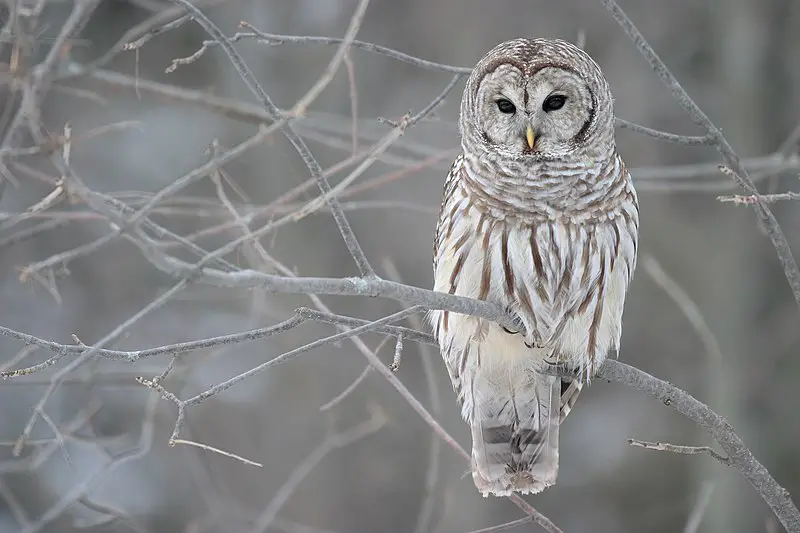
The Barred Owl is a large species of owl native to eastern North America. It belongs to the genus Strix, which is part of the true owl family Strigidae.
These beautiful birds are mainly brown with distinct stripes on their bodies and wings. Its face has dark eyes, a white chin patch and two black bars across its yellow-brownish beak, giving it an intimidating appearance.
The barred owls have powerful talons that they use for hunting small mammals like mice and voles as well as other animals such as fish, amphibians or insects.
They also rely heavily on hearing when looking for prey in low light conditions.
With their amazing camouflage abilities these birds can often remain undetected while observing potential threats from predators – making them highly successful hunters.Scientific classification:
| Kingdom | Animalia |
| Phylum | Chordata |
| Class | Aves |
| Order | Strigiformes |
| Family | Strigidae |
| Genus | Strix |
| Species | S. varia |
Also Featured In: Most Popular Bird Species in North America, Most Common Songs Birds that Live around You
2. Atlantic Puffin
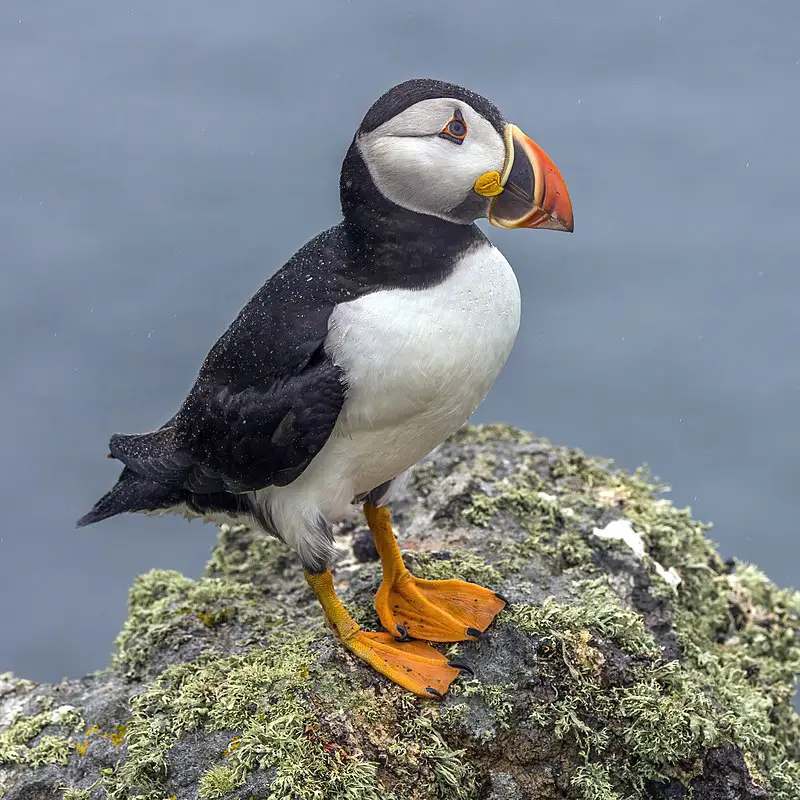
The Atlantic puffin is a seabird that belongs to the auk family. It has two related species found in the northeastern Pacific, namely tufted and horned puffins.
This bird breeds widely throughout Russia, Iceland, Ireland, Norway, Greenland and Canada’s Newfoundland & Labrador as well as Nova Scotia regions of Faroe Islands.
Its colorful beak with markings of yellowish-orange during mating season makes it stand out among other birds.
An interesting fact about this sea-dweller is its ability to fly underwater; they use their wings for propulsion while swimming.
The Atlantic puffin diet consists mainly of fish caught from shallow waters near shorelines or cliffsides where they nest annually during springtime months before embarking on long migrations southward towards winter grounds at seaside coasts until spring returns once again.Scientific classification:
| Kingdom | Animalia |
| Phylum | Chordata |
| Class | Aves |
| Order | Charadriiformes |
| Family | Alcidae |
| Genus | Fratercula |
| Species | F. arctica |
Also Featured In: Common Birds in Canada, Birds You’ll Find in the Sea
3. Piping Plover
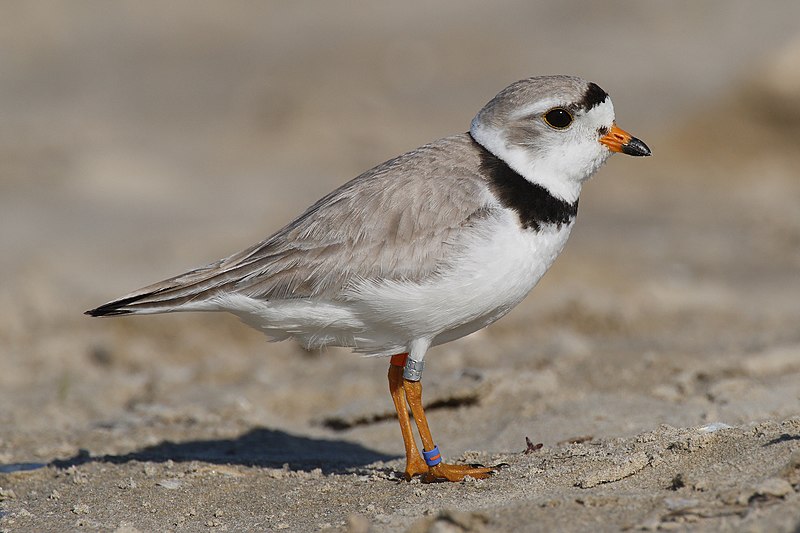
The Piping Plover is a small shorebird that can be found along sandy or gravel beaches in North America.
It has yellow-orange-red legs and its distinctive features include a black band across the forehead from eye to eye, as well as a thicker chest band for males during breeding season.
They are threatened by human activity on their habitats such as increasing development of coastal areas, destruction of their nesting sites due to recreation activities like beach driving and off-leash dogs.
Conservation efforts aim at protecting these birds through habitat protection measures including fencing off areas where they nest and restricting access during breeding seasons.
The future looks brighter with conservation initiatives by local governments slowly bringing the population up again over time.Scientific classification:
| Kingdom | Animalia |
| Phylum | Chordata |
| Class | Aves |
| Order | Charadriiformes |
| Family | Charadriidae |
| Genus | Charadrius |
| Species | C. melodus |
Also Featured In: Birds Commonly Found in New York, Long Island Birds You Should Know
4. Northern Gannet
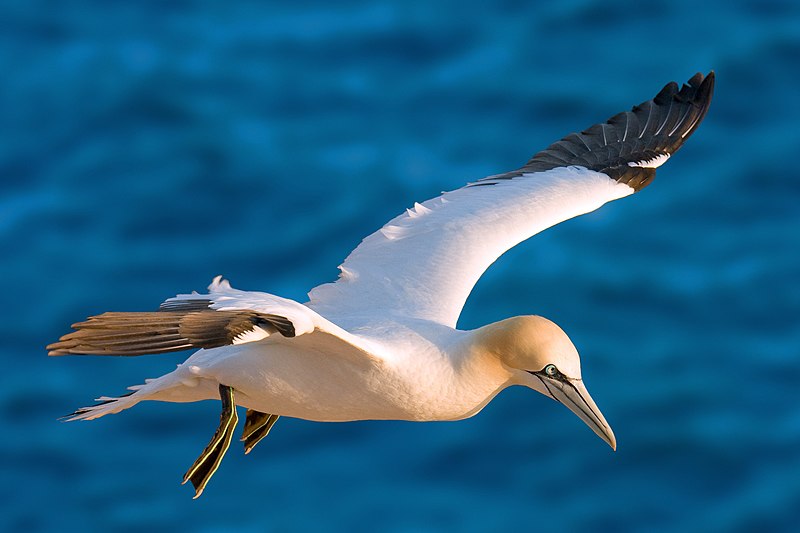
The Northern Gannet is the largest species of seabird in the northern Atlantic, with a white body and long neck.
It has yellowish head feathers and black tipped wings that can reach up to 6 feet across when fully extended.
The beak is large and orange-yellow in color. This bird breeds along western Europe’s coasts as well as northeastern North America.
They forage for fish by plunging into the sea from high above, making them an impressive sight to behold on any given day.
Their diet consists mainly of herring, mackerels or sand eels which they catch midair after diving at speeds reaching over 100 miles per hour.
With their striking features these birds are truly majestic creatures that have been around since prehistoric times – a testament to their hardiness and adaptability.Scientific classification:
| Kingdom | Animalia |
| Phylum | Chordata |
| Class | Aves |
| Order | Suliformes |
| Family | Sulidae |
| Genus | Morus |
| Species | M. bassanus |
Also Featured In: Birds found in portugal, Italian Birds You Should Know
5. Arctic Redpoll
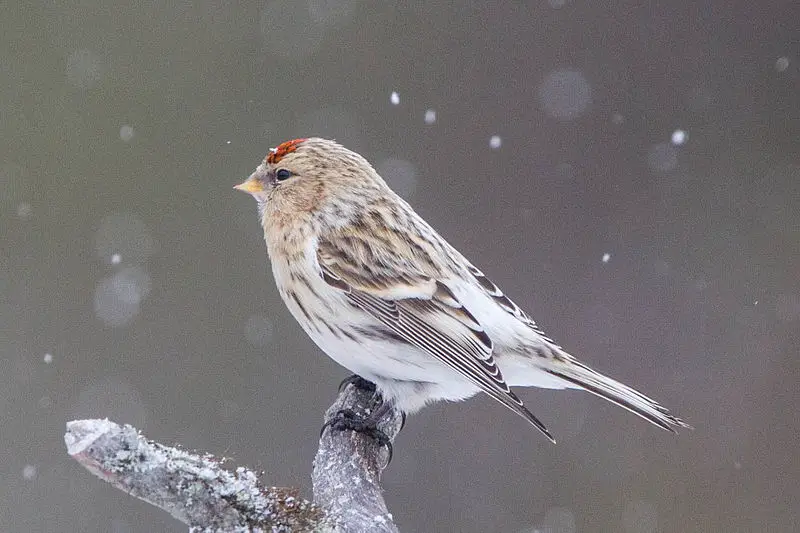
The Arctic redpoll, also known as hoary redpoll, is a species of bird in the finch family.
It breeds mostly in tundra birch forests and has two subspecies- Hornemann’s Arctic Redpoll found primarily in Greenland and neighbouring parts of Canada while Coues’ arctic redpoll can be seen breeding across Northern North America and Palearctic regions.
This small songbird nests on the ground or low shrubs during summer months before migrating south for winter season.
Its main diet consists of seeds but it may occasionally eat insects like caterpillars to supplement its nutrition needs.
These birds have reddish plumage with white patches on their wings which offer them great camouflage against predators such as hawks when they are perched amongst trees or flying over snow covered grounds respectively.Scientific classification:
| Kingdom | Animalia |
| Phylum | Chordata |
| Class | Aves |
| Order | Passeriformes |
| Family | Fringillidae |
| Subfamily | Carduelinae |
| Genus | Acanthis |
| Species | A. hornemanni |
Also Featured In: Finches Species, Birds that Live in Greenland
6. Olive-Sided Flycatcher
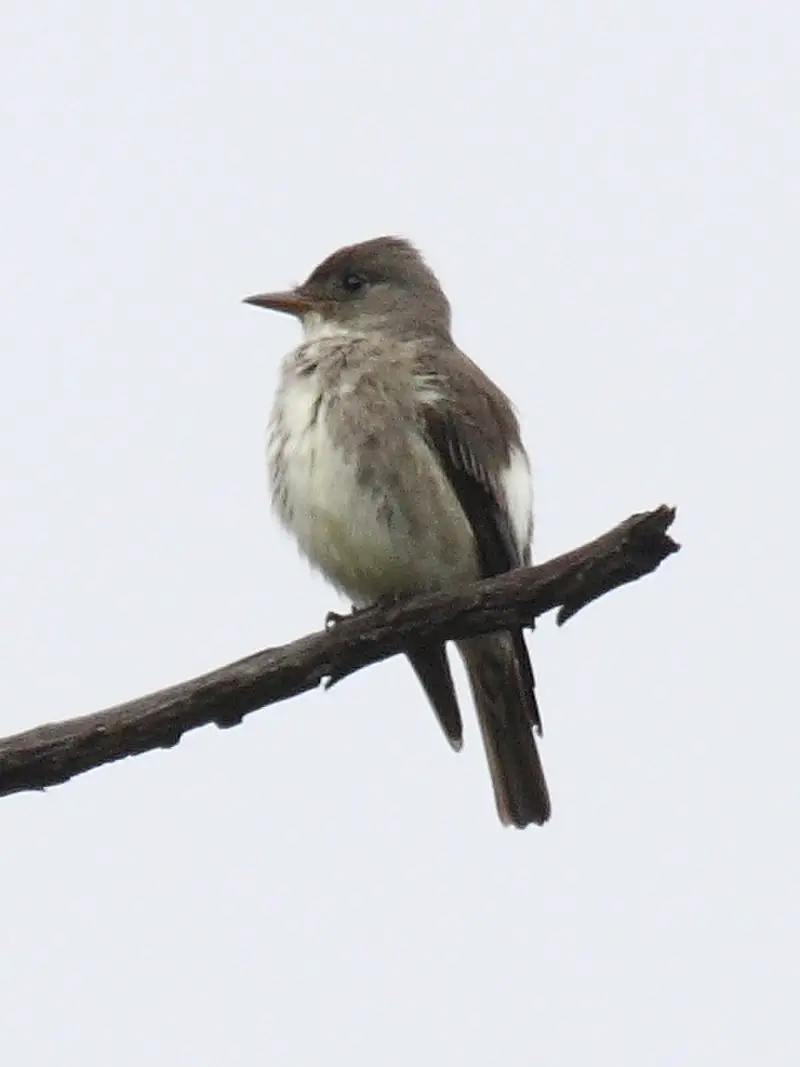
The Olive-sided Flycatcher is a small to medium size passerine bird in the family Tyrannidae.
It migrates from South America to North America for breeding every summer and preys on flying insects while agilely gliding through the air.
This species has been considered near threatened globally by IUCN since 2016 due to population declines caused by habitat loss, deforestation, and fragmentation of their nesting grounds.
Conservation efforts are underway with research being done on this species’ behaviour and habits so that suitable habitats can be created or maintained for them to survive long term.Scientific classification:
| Kingdom | Animalia |
| Phylum | Chordata |
| Class | Aves |
| Order | Passeriformes |
| Family | Tyrannidae |
| Genus | Contopus |
| Species | C. cooperi |
Also Featured In: Flycatchers Species, Birds that Live in Newfoundland and Labrador
7. Northern Saw-Whet Owl
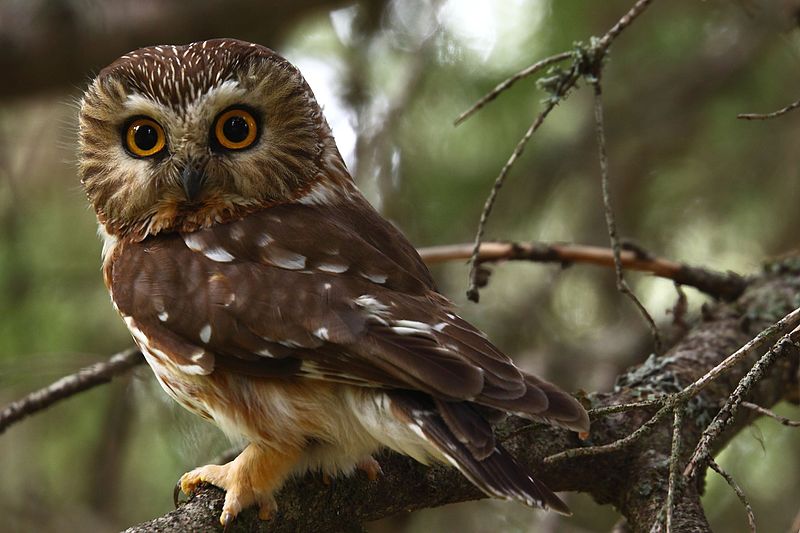
The Northern saw-whet owl is a small species of bird native to North America. It can be found in dense thickets, either at eye level or up to 20 feet high.
These owls are among the smallest species of their kind on the continent and have sharp claws for hunting prey such as rodents and other birds.
Due to its size, it often falls victim to predators like larger hawks and eagles which hunt them down relentlessly.
Fortunately, they camouflage well with their brown feathers that blend into trees easily giving them some protection from these hunters while they search for food during night time hours when most predators are asleep.Scientific classification:
| Kingdom | Animalia |
| Phylum | Chordata |
| Class | Aves |
| Order | Strigiformes |
| Family | Strigidae |
| Genus | Aegolius |
| Species | A. acadicus |
Also Featured In: Owls Species, Common Southern Californian Birds
8. Hooded Merganser
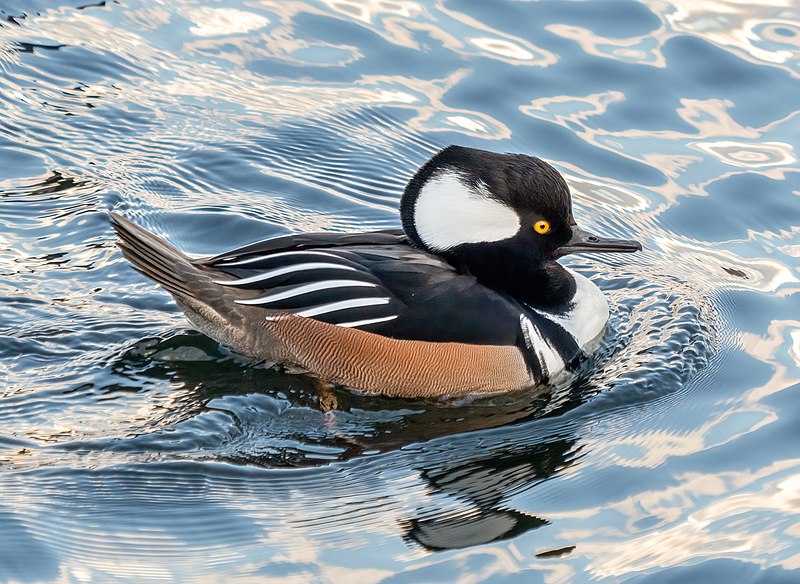
The Hooded Merganser is a beautiful and unique bird, belonging to the family of mergansers. It is easily recognizable due to its distinct crest which can be raised or lowered at will.
During breeding season, males have an impressive plumage with various colors and patterns that make them stand out even more.
They live near streams, ponds or marshes where they feed on aquatic insects, crustaceans and small fish by diving in from above the water surface with their wings open before submerging completely under it.
Their nesting habits involve using hollows created by other animals such as beavers for laying eggs inside tree cavities too close to water bodies so that they are well-protected from predators while still providing them easy access to food sources.Scientific classification:
| Kingdom | Animalia |
| Phylum | Chordata |
| Class | Aves |
| Order | Anseriformes |
| Family | Anatidae |
| Genus | Lophodytes Reichenbach, 1853 |
| Species | L. cucullatus |
Also Featured In: birds of New Mexico, Water Birds Live around Us
9. Wood Duck
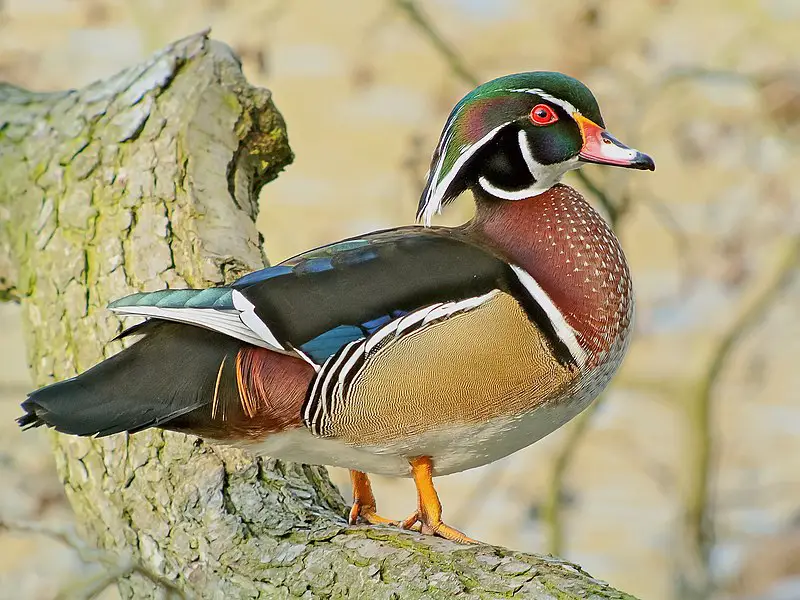
The wood duck, also known as the Carolina Duck, is a species of perching duck native to North America. It is renowned for its beautiful plumage and vibrant colors.
On average, an adult wood duck stands at 19-21 inches in length with a wingspan ranging from 26 to 29 inches. Its weight typically falls between 454–800 grams depending on gender and seasonality.
This medium-sized bird can be seen swimming or perched atop branches near bodies of water like lakes, ponds and rivers – where it feeds mostly on aquatic plants and insects.
The female builds nests inside cavities in trees close to these waters while the male protects her eggs during incubation period until they hatch into adorable little chicks.
Wood ducks are beloved by many due their stunning looks which make them popular subjects among photographers too.Scientific classification:
| Kingdom | Animalia |
| Phylum | Chordata |
| Class | Aves |
| Order | Anseriformes |
| Family | Anatidae |
| Genus | Aix |
| Species | A. sponsa |
Also Featured In: Common Central Park Birds, Most Common Lake Birds
10. Bay-Breasted Warbler
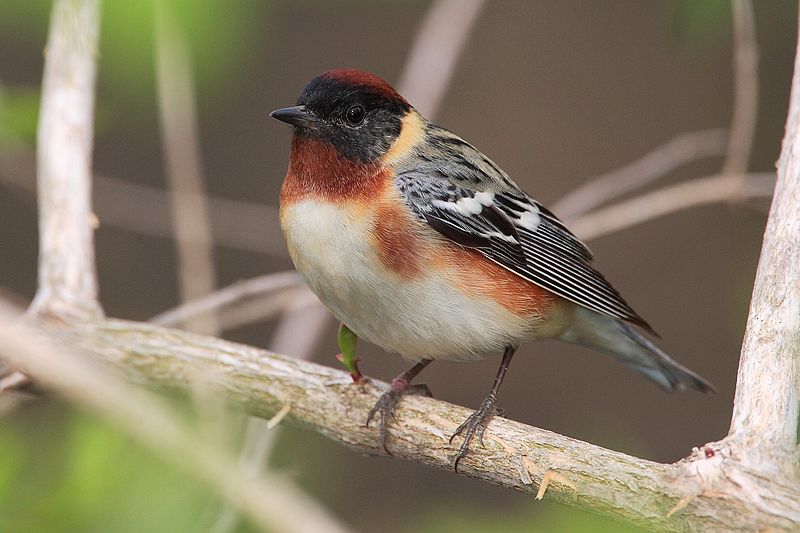
The bay-breasted warbler is a small songbird belonging to the New World warbler family. It is part of the diverse genus Setophaga, which has 34 species.
This bird species is classified in the Passeriformes order, which includes all songbirds. Bay-breasted warblers breed in the boreal spruce-fir forests of central and eastern Canada and the extreme north.
They have a unique coloring of brownish-gray above and reddish-brown below that makes them easily recognizable.
Their preferred habitats during breeding season include large, dense tracts of spruce and fir trees.
These birds are known for their complex songs, which they use to communicate with each other.
They are also important for ecology as they are seed dispersers and play a significant role in forest health.Scientific classification:
| Kingdom | Animalia |
| Phylum | Chordata |
| Class | Aves |
| Order | Passeriformes |
| Family | Parulidae |
| Genus | Setophaga |
| Species | S. castanea |
Also Featured In: Adirondack Mountain Birds,
11. Philadelphia Vireo
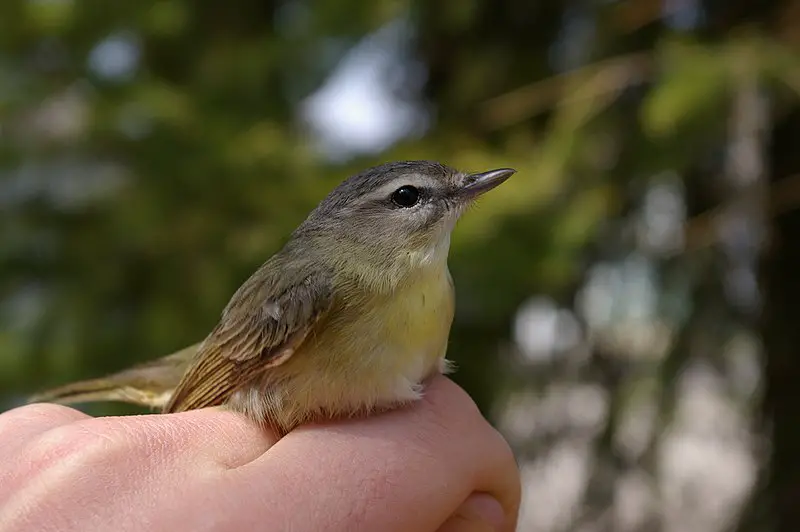
The Philadelphia vireo is a tiny, migratory bird found in North America. It belongs to the vireo family and is named after the city of Philadelphia. The adults have olive-brown upperparts and yellow underparts, with dark eyes.
They are known for their pleasant songs that are often heard during the breeding season. The name ‘Vireo’ has Latin roots and is thought to refer to a green migratory bird. These small birds are hard to spot in the wild as they tend to stay up in the trees.
They are insectivores and feed on insects and spiders. The Philadelphia vireo is an important part of the ecosystem due to its role in controlling insect populations.
Unfortunately, like many songbirds, their population is declining due to habitat loss and other threats.Scientific classification:
| Kingdom | Animalia |
| Phylum | Chordata |
| Class | Aves |
| Order | Passeriformes |
| Family | Vireonidae |
| Genus | Vireo |
| Species | V. philadelphicus |